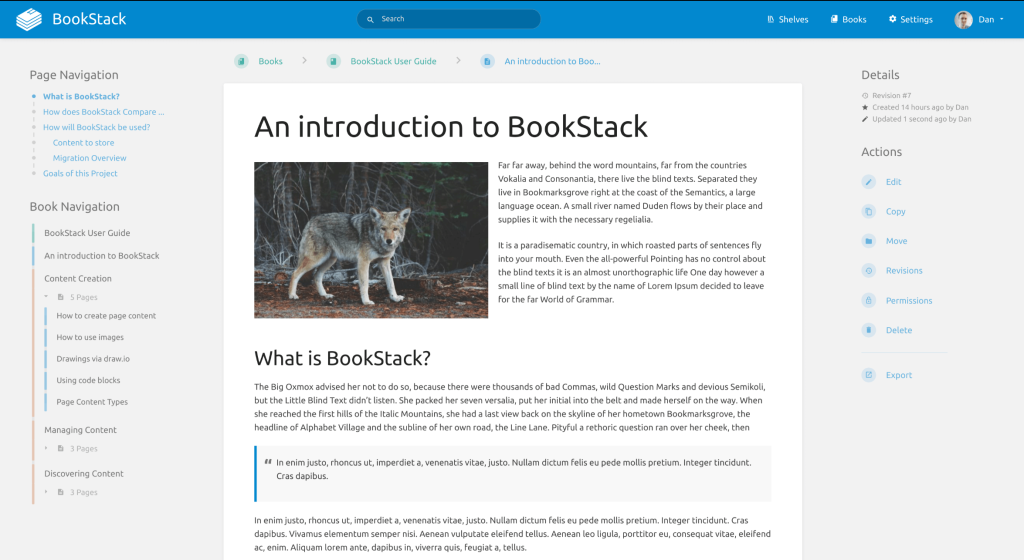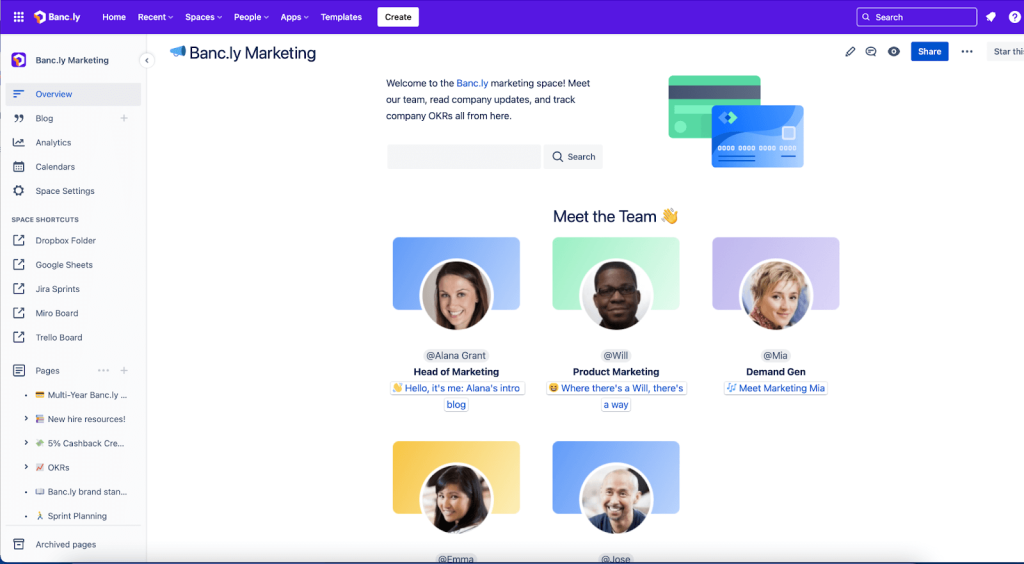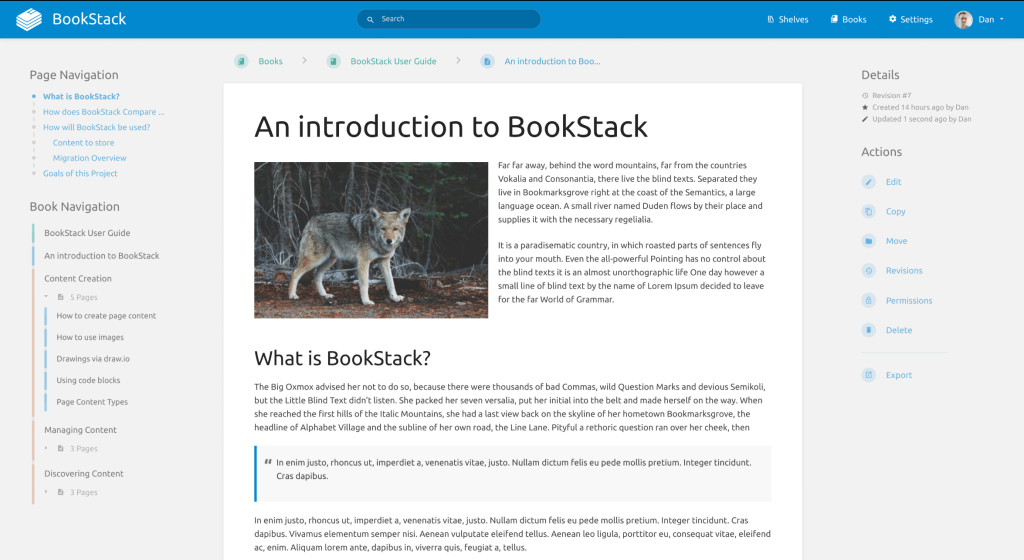In the learning & development space, we often pride ourselves in the ability to craft engaging learning programs. And we should be proud! We use learning science to effectively transfer information and skills to our employees.
But let’s be real – the human brain has limitations in storing and being able to recall vast amounts of information. Employees don’t memorize every detail that’s needed on the job.
As a solution to this problem, the implementation of an internal knowledge base becomes increasingly essential, offering a centralized resource for employees to access valuable information, especially in time-sensitive situations. In this article, we will explain more about what an internal knowledge base is and why it’s important. We will then provide tips for how to create one, and share our favorite knowledge base software.

What is an internal knowledge base?
An internal knowledge base is exactly what its name suggests: a platform where employees can access company-related information.
Traditional platforms are often used by organizations to share and store information, such as Google Drive or Dropbox, however a proper internal knowledge base offers so much more. It is tailored to the specific needs of your knowledge management strategy, allowing you to provide coursework, job aids, and explanations alongside the main content.
Some of the things to look for in a high quality knowledge base include:
- Training materials for employees
- Company policies
- Onboarding paperwork and protocols
- Department-specific goals, KPIs, processes
- Troubleshooting guides
- Information about employee benefits and compensation
- Optimized SEO and proper search query to access information
Why is an internal knowledge base important?
With top notch learning and development, employees still forget some of the information they learn. An internal knowledge base acts as the hub for employees to efficiently retrieve information, leading to increased productivity and reduced time spent searching. This efficient retrieval of information is crucial for making decisions and completing tasks on the clock.
It all boils down to providing usable knowledge – at the right place and at the right time.
And how does it all relate to learning and development? For each situation an employee needs to recall information, the employee receives an extra “repetition”. These repetitions are crucial for closing the memory gap, and directly aligned with the learning and development objectives.
The following scenario is a great example of how your internal knowledge base should directly tie to learning and development.
At company X, John, a recent hire, completed training conducted by the learning and development team. The training covered engineering workflows relevant to Company X’s project portfolio. Despite proper training (blended learning), John found himself struggling to recall some of the specific details about the workflow, especially when faced with a complex task. While his direct supervisor was bogged down with back to back meetings, John turned to Company X’s knowledge base, a central hub of information crafted to aid employees like him.
Over the next few weeks, John frequently referred to the internal knowledge base to retrieve the information related to the engineering workflow. The ease of access to this centralized repository of information proved invaluable. After about four or five instances of relying on the knowledge base, a subtle shift occurred. John no longer needed the knowledge base to retrieve information about this particular workflow. The initial corporate training along with the knowledge base had successfully embedded the engineering workflow into his memory.
Now, John navigates through the workflow with ease, allowing him more time to draw upon the skills he acquired during employee training.
This example highlights the symbiotic relationship between structured corporate training and the practical application of an internal knowledge base. Not only is the hub important for providing information at the right place and at the right time – it adds a massively important element to the overall learning process of information.
Tips to create an internal knowledge base
Conduct a thorough analysis
To begin creating an internal knowledge base, you need to gather input and feedback from current employees – similar to conducting a learning needs analysis.
Talk to your employees about the knowledge gaps they experience, especially the gaps during time-sensitive situations. Run a formal survey with your newer employees to assess your onboarding process, with specific questions about the learning experience.
A solid analysis will give you enough information to identify the areas that are most critical. It will also allow you to better decide on a budget, and then calculate the potential ROI on such an investment.
Some of the variables to consider:
- Corporate learning culture
- Employee onboarding process
- Employee retention
- Reducing workplace errors
- Reducing knowledge gaps
Identify key personnel
As part of your planning process, it is important to determine the human resources needed for such a project and platform. We suggest allocating somebody from HR to be actively involved in the knowledge base creation, implementation, and management.
Instructional designers provide excellent instructional writing skills, a design perspective, and expertise in learning science. They should also have experience communicating and collaborating with subject matter experts (SMEs) across your organization.
Additionally, we suggest you identify the SMEs at the beginning of your planning process. They will need to be able to provide information that will be inserted into the company’s knowledge hub.
Create a project timeline
When creating a project timeline, be realistic. Many of your company’s SMEs are busy at work, perhaps in a revenue-generating capacity. Make you communicate your goals and requirements clearly with these employees.
We suggest an instructional designer and project manager work closely together to create the project timeline. The project manager should have the necessary skills to estimate task durations, create a work breakdown structure, and use a project timeline tool.
The best software for creating an internal knowledge base
To recap the importance of creating an internal knowledge hub – It all boils down to providing usable knowledge – at the right place and at the right time. Here are some of our favorite knowledge base software!
Confluence
Let’s begin with one of the biggest vendors in the industry. With over “35,000 trusted partners”, Confluence is considered a great software for creating an internal knowledge base. We strongly suggest Confluence to organizations who are either familiar with Atlassian, and/or need a tool to create an extensive repository of information.
The collaboration and documentation platform supports rich text formatting, which allows the development team to create engaging content and documentation. You can easily design images, tables, and other media to enhance the internal knowledge content.
Confluence also provides customizable templates for different types of learning content, which include templates for documentation, project plans, and meeting notes. This makes it much quicker for the instructional designer to create content that remains consistent throughout the organization.
Additionally, Confluence includes a useful search function, allowing employees to find the relevant information quickly, granted it exists in your organization’s information repository.
Pricing: Pricing varies based on users, deployment options, and other features. Click here to see the most recent pricing.
Note: Confluence is developed by Atlassian, which means it easily integrates with other Atlassian platforms such as Bitbucket, Jira, and Trello. While it is a great tool for organizations who are familiar with Atlassian, the learning curve can be steep for Atlassian newbies.

BookStack
For smaller organizations on a tight budget, we strongly recommend checking out BookStack. BookStack does not have all the features or backing as Confluence by Atlassian, but it does the job – for free! Licensed by MIT, the source is available on GitHub.
BookStack’s interface is beautiful and simple. Instructional designers can create content for your internal knowledge base and bucket the content into an easy-to-understand hierarchy: books, chapters, and pages. And employees can easily find learning content using the BookStack search feature.
Pricing: Free
Note: BookStack is an open-source internal knowledge base software that allows for great flexibility and customization. Because it is free, it does not have the same level of customer support as some of the other software in this article.

Helpjuice
Our last recommendation provides a combination of what we like about Confluence and BookStack. Helpjuice is the perfect knowledge base software that allows you to create engaging content, quickly. It is simple to use, but also extremely customizable.
Advertised as the #1 Rated Knowledge Base Software (Since 2011), Helpjuice takes search engine optimization to the next level. The software constantly observes how people in your organization search for content in the internal knowledge base, and then constantly improves the search function. Similar to the Google search engine, BookStack uses article titles, tags, keywords and more. This feature is extremely useful for employees who need to find critical information at the right time.
Let’s finish with one more thing about Helpjuice. It is our number one choice for knowledge base analytics. Helpjuice provides you with incredible data about what your employees are searching for. Organizations can make data-informed decisions to easily adapt their knowledge management strategy.
Analytics also allows the instructional designer to collect feedback about knowledge base structure, knowledge content, and overall engagement. As learning and development professionals, we strongly back this feature.
Pricing: Pricing varies based on the amount of users. Plans start at $120/month. Click here to see the most recent pricing.

Wrapping up
In conclusion, an internal knowledge base is valuable for enhancing information retrieval and improving memory retention. We think of the internal knowledge base as a strategic asset, contributing to corporate learning and development, and helping promote a learning culture at any organization. For more information about internal knowledge base, or for more help deciding on which knowledge base is best for you, feel free to contact us.
EduPivot LLC is a learning agency that specializes in empowering small and mid-sized companies with tailored eLearning solutions. Whether you’re seeking to optimize existing training programs, implement a cutting-edge LMS, or craft custom eLearning tailored to your industry, we’ve got you covered. Contact us for a free consultation.
